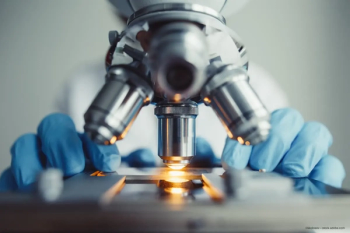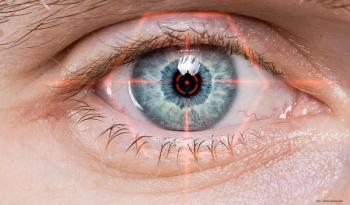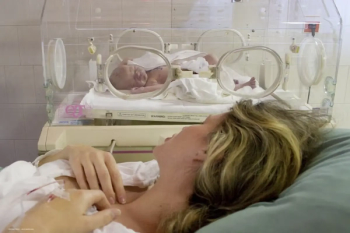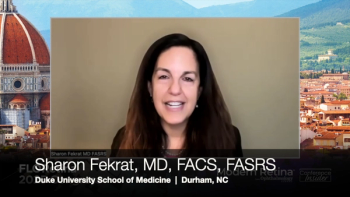
- Ophthalmology Times Europe September/October 2025
- Volume 21
- Issue 5
- Pages: 24 - 27
Celebrating 25 years of EURETINA in Paris, France
Reporting from the European Society of Retina Specialists annual congress
The European Society of Retina Specialists (EURETINA) held its 2025 congress in Paris, France. This year marked a significant anniversary, as EURETINA celebrated 25 years with scientific programming and anniversary festivities from 4 through 7 September at Le Palais des Congrès. The Eye Care Network was on-site during the congress, sharing copies of Ophthalmology Times Europe and Modern Retina with meeting attendees. We also spoke with EURETINA leaders, keynote speakers and award winners to record the most memorable parts of this year’s meeting.
Second annual Ramin Tadayoni Award
The second Ramin Tadayoni Award was presented during the 2025 EURETINA congress welcoming ceremony. The organisation’s leadership presented the inaugural Ramin Tadayoni Award in 2024, established in memory of Ramin Tadayoni, MD, PhD. He was not only a leader in retina research, but is remembered as a dear friend and colleague to many in the retina community. Prof Tadayoni was president of EURETINA at the time of his passing in April 2024. In his memory, the annual award grants €30,000 for research support, and an additional €5,000 directly to the candidate, supported by EURETINA and Oculis Holding AG.
The award will support research that Dr Ramtohul has already explored as part of his PhD project. “We’re completing fundamental studies in mouse retina, using electrophysiologic testing to study the retinal ganglion cells,” Dr Ramtohul said. The aim of the research is to establish the intrinsic plasticity of retinal ganglion cells. “Like the neurons of the brain or the thalamus, the retina can also have some plasticity,” he said. Advancements in this research space could further strengthen the link between neurological and retinal research.
Dr Ramtohul said the award funding will expand the scope of imaging used in the study. “Now, we are just focusing on electrophysiology. We can add imaging studies, using in vivo OCT [optical coherence tomography] or autofluorescence of the retinal cell,” he said. “That would be a great advancement to the research we are currently doing.” His hope is that additional testing will unveil broader ophthalmic implications, and more avenues for therapies across a range of pathologies. “We want to prove that retinal ganglion cells are also involved in common diseases like amblyopia,” Dr Ramtohul said. He hopes to demonstrate that retinal ganglion cells can be a target for treating a wide array of conditions, including amblyopia and strabismus, retinitis pigmentosa and glaucoma. “This is a huge honor. I am very grateful to the EURETINA board, and the community [for giving] me this tremendous award,” Dr Ramtohul told Ophthalmology Times Europe. He encouraged other retina specialists to apply for the award in 2026 and beyond.
“The Ramin Tadayoni Award is one of the most exciting endeavors of the EURETINA board,” said Prof Loewenstein. “We are granting the Ramin Tadayoni Awards to bright researchers who have already contributed and will contribute to the field of retinal disease,” she continued. “I’m sure that Professor Ramin Tadayoni would have been thrilled to see his mentee granted this award.”
Prof Loewenstein mentioned that giving research grants to young researchers with promising projects is one of the EURETINA board’s most important goals for the immediate future.
“Being able to make modifications in ganglion cells is something that we could only dream about formerly. Now there is a future, and this future goes parallel with many other efforts in our field trying to make vision better for our patients, even in situations which, in the past, seemed to be really untreatable.”
“For young researchers who have bright ideas, I encourage you very warmheartedly to
Keynote speakers discuss their lectures
Before and during the congress, the Eye Care Network met with all four keynote speakers to discuss their contributions to the programme. María Berrocal, MD, delivered the Kreissig Award lecture; Maria Vittoria Cicinelli, MD, FEBO, delivered the Ophthalmologica lecture; Jean-François Korobelnik, MD, presented the Gisbert Richard lecture; and Ursula Schmidt-Erfurth, MD, presented the EURETINA Lecture.
“Ingrid Kreissig was instrumental in bringing us cryotherapy and minimal buckle surgery,” Prof Berrocal said. “She was the first to describe pneumatic retinopexy.”
“One of them is the minimal, non-drainage scleral buckle procedure for retinal detachments,” Prof Berrocal said. “We get success rates of up to 97% with a single operation when we use a minimal, non-drainage buckle procedure. The visual acuity results are better than with primary vitrectomy, and the complication rates are much less.” Prof Berrocal also spoke about pan-retinal photocoagulation as a standard treatment for proliferative diabetic retinopathy (DR). “Pan-retinal photocoagulation has been used for over 40 years, and we know that it provides stability to eyes…almost for life and with very good visual acuity results,” said Prof Berrocal. Monthly injections have come into favor for many clinicians treating patients with DR.
However, Prof Berrocal said the follow-up burden introduces a risk of treatment being discontinued prematurely. “Treating a disease that is lifelong and that requires regression of neo-vessels with a temporary procedure…in my mind, doesn’t make sense when we have an older procedure that provides long-term stability,” she explained. “I love adopting new things. I really love vitrectomy for severe diabetic complications. But I also see what happens when patients are lost to follow-up.” Prof Berrocal said she hoped that lecture attendees took her message to heart, and embrace the “old-school” methods where appropriate instead of using a “new” procedure that could be a poor fit for a patient’s lifestyle needs.
Prof Cicinelli delivered the Ophthalmologica lecture. Her presentation focused on white spot syndromes, idiopathic inflammatory diseases that are non-infectious, frequently occur in young patients and are especially prevalent in women. “I focused on specific entities during the lecture,” Prof Cicinelli said, “Mainly on punctate
Using real-life case studies, Prof Cicinelli illustrated classic presentations of white spot syndromes before moving into rare and atypical presentations. “There was a case of choroidal rupture after a trauma, and a case of degenerative disease,” she recounted. “In one case of extensive macular atrophy, or EMA, pseudodrusen-like appearance developed from outer retinal inflammation.” The key takeaway from the lecture was a lesson Prof Cicinelli often hopes to impart to her residents and fellows, she said. “Sometimes diseases do not appear as you read about in the textbooks and literature,” she said. Prof Cicinelli said that many myopic patients misdiagnosed with myopic degeneration actually suffered from inflammatory diseases, and could have benefitted from anti-inflammatory therapies. Instead, she said, unchecked inflammation does damage to patients’ visual acuity. “Broaden your differential diagnosis. It’s important to establish the correct treatment and potentially save and preserve sight in these young patients.”
Prof Korobelnik saw this year as the perfect timing for his lecture, titled “
Additionally, Prof Korobelnik described how a sense of immediacy has driven one of the most effective innovations in this space, which is the administration of antibiotics via intravitreal injection. “We used to do systemic antibiotics to prevent one of the main risks of intraocular foreign bodies, which is intraocular infection,” he said. “But we’ve switched to intravitreal injections of antibiotics, one at the time of the closure of the wound, and a few days later, we do a second surgery to remove the foreign body.” The delicate nature of these subsequent procedures requires a specialised skill set, and very thoughtful surgical planning. “This is taking more time,” he warned. “It requires more specific tools for surgery, and it requires specific surgeons.”
One of the key takeaways Prof Korobelnik hoped attendees would remember from his lecture was a specific tool that he sees as underutilised. “Now, when we have metallic intraocular foreign bodies, we use intraocular magnets…to elevate the [foreign] body from the retina without grasping, without pushing,” he said. Some video cases he presented at EURETINA focused on intraocular magnets, which are reliable and have many advantages over forceps. “I was surprised to see in the last few years that some surgeons are not aware of those magnets. They don’t use them,” he said. “It’s a pity, because easier surgery is better for the patients.”
Prof Schmidt-Erfurth made
“Then we have dry AMD,” she continued. “It is slowly progressive, and this progression is based on a subclinical biomarker that we now identified by AI tools, which is the photoreceptor layer that is named ellipsoid zone. On the OCT it’s a subclinical marker, and AI is needed to identify changes at this very sensitive level of the photoreceptors, because human experts cannot see this damage readily.”
“But we know that it’s the first step in geographic atrophy,” she added. “This is the biomarker which is most important to reflect visual acuity and visual loss.” Now that high-resolution OCT and AI tools are more widely available, Prof Schmid-Erfurth continued, patients will see widespread benefits on a community care level.
“By offering such a tool to [optometrists and opticians], we can have early diagnosis and early access to treatment,” she said. “It’s another step in terms of democratising the care.”
Anat Loewenstein, MD, looks to the future
Prof Loewenstein reflected on her accomplishments as EURETINA president, and said she looks forward to handing the reins to the president-elect, Nicole Eter, MD. “I’m very, very fortunate that I was put in this spot. This year’s meeting surpassed all our expectations,” Prof Loewenstein said. “We have 11,000 participants, which is, I think, not only
Prof Loewenstein has some theories as to why the congress has become so popular, especially in recent years. “First of all, because of the high-level scientific content. Everyone, at the end of the day, wants to see the real content that comes up.”
She also credited younger retina specialists for their enthusiasm. The young retina specialists (YOURS) programme is built by young leaders and addresses some of the topics that those early-career specialists are most interested in. “I think YOURS has a big attraction,” she said. “And the EURETINA sessions or industrial symposia are very, very attractive, because this is where you actually hear what is really going on in the retina space.”
As immediate past president, Prof Loewenstein will still have plenty of responsibilities at the 2026 EURETINA meeting.
Articles in this issue
about 1 month ago
Optogenetics for advanced retinal diseaseabout 1 month ago
A new direction for therapeutic keratopigmentationabout 1 month ago
Efficiency in glaucoma practices begins with an intentional design2 months ago
Insights into atropine usageNewsletter
Get the essential updates shaping the future of pharma manufacturing and compliance—subscribe today to Pharmaceutical Technology and never miss a breakthrough.













































